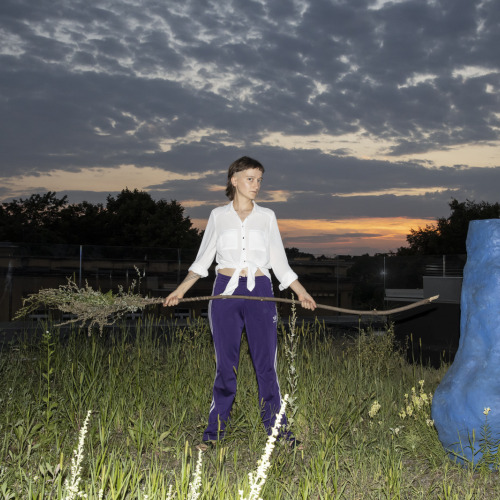
(S)pozaba kaprice
In (S)pozaba kaprice / Caprice
(Re)lapse the dancer surrenders her own expression to the record
of memory which - although forgotten - has been stored in the muteness of the
body. Within this empty space, the structure of the concealed writes of a
vanishing and re-emerging body.
Vacant space, in much the same
manner as silence, has yet to be established. It is depicted by (an inaudible)
voice which operates as a horizon on which other voices register.
It is a voice that seems not to
exist, because it is inaudible and taken for granted.
The voice of space.
Incorporates the voice which has
already been articulated and has faded away. It works and is present only as a
memory of something past, something finished – and as a record, something
semi-erased, mutilated, relocated.
It is a voice that seems not to
exist because it is a matter of past.
The voice of memory.
Shares a place with and is
influenced by the voice which emerges from the same point, becomes entangled
between the holes of memory, and leaves behind traces and disrupted silence
when it disappears.
It is a voice that seems not to
exist because it ceases to exist while emerging.
The voice of body.
…Memory of the body gives voice to
the forgotten…
Body with regard to a space of
voices…
Body is the space being listened to.
Voice is imageless.
Body is mute.
Body is voiceless.
Voice
is something else…
Body of voice itself is not the body
of the one who speaks.
Body of voice is not body of body.
Body of body is not body of voice.
Voice
is sealed with body.
Body of voice is oscillation in the
dimension of emergence and divergence.
Body of voice is an empty space
stripped by voice.
…
the structure of voice reveals the landscape of body.
Why repeat with a difference? Why
return to the faded paper of forgotten and refused material, and dig out the
remaining deposits of memory from something that belongs to history?
A work process may have several
inter-stations. These crossings are intersections of various eventual outcomes
– decisions in the middle of a process that are crucial to the final outcome
and countenance of the project. At each of these nodes, the author(s) compile
balance sheets of what has already been done, reinvestigate approaches to the
methods and materials, analyse structures and decide upon a particular
direction and manner in which the process shall be completed; while at every
such stage work is accomplished within the set premises. Intermediate stages of
the work process may be either something completely different from the final
product – but nonetheless of critical importance – or merely atrophied
productions of the final form.
If one returns to any such inter-station,
before heading off in a new and different direction, what challenges will there
be? Where will it lead? And what will be the outcome? To return to the
reservoir of memory, from which one can draw something that was once abandoned
or never used, the outcome is changed, while the resultant challenge leads to a
different countenance of performance.
… Memory might be just a way of
accepting the forgotten…
Irena
Tomažin
Slovene première produced by Maska
Concept, choreography: Irena Tomažin;
sound design, music: Mitja Reichenberg;
light design: Jaka Šimenc; set
design: Marko Brdar
Organisation:
City of Women
In
collaboration with: Maska,
Bunker/Stara elektrarna


